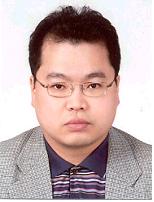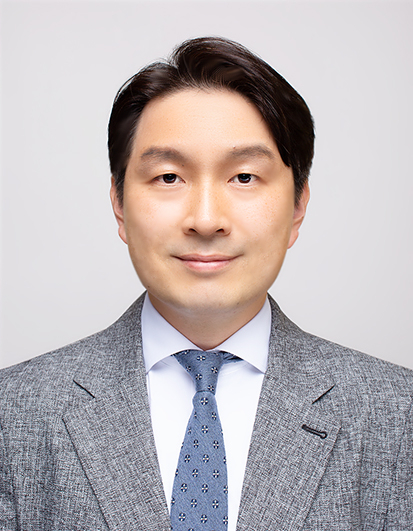Koh, Young-Sang Professor

| Career and thesis | |
|---|---|
| Education | - B.S. Dept. of Microbiology, Seoul National University, 1989 |
| Major career | - Postdoctoral Fellow, Harvard Medical School, 1996-1997 |
| main paper | 1. Koh YS (corresponding author) et al. 2013. Inhibition of cell death of bone marrow-derived macrophages infected with Ehrlichia muris. Ticks and Tick Borne Disease 4(3):185-90. 2. Koh YS (corresponding author) et al. 2012. Intracellular invasion of Orientia tsutsugamushi activates inflammasome in ASC-dependent manner. PLoS ONE 7(6):e39042. 3. Koh YS (corresponding author) et al. 2012. Inhibitor of growth-4 mediates chromatin modification and has a suppressive effect on tumorigenesis and innate immunity. TUMOR BIOLOGY, 33(1):1-7. 4. Koh YS (first author)et al. 2010. MyD88-Dependent Signaling Contributes to Host Defense against Ehrlichial Infection. PLoS ONE 5(7):e11758. 5. Koo JE, Yun JH, Koh YS(corresponding author). (2009) Activation of mitogen-activated protein kinases is involved in the induction of interferon beta gene in macrophages infected with Orientia tsutsugamushi. Microbiology & Immunology 53;123-9 7. Cho NH et al (2007) The Orientia tsutsugamushi genome reveals massive proliferation of conjugative type IV secretion system and host-cell interaction gene. Proc Natl Acad Sci USA 104:7981-9. 8. Yun JH, Koh YS (corresponding author) et al (2005) Chemokine and cytokine production in susceptible C3H/HeN mice and resistant BALB/c mice during Orientia tsutsugamushi infection. Microbiology & Immunology 49;551-7. 9. Koh YS (corresponding author), Yun JH et al (2004) Chemokine and cytokine production during Orientia tsutsugamushi infection in mice. Microbial Pathogenesis 36:51-7. 10. Koo MS et al (2003) A reducing system of the superoxide sensor SoxR in Escherichia coli. EMBO Journal 22:2614-22. 11. Cho NH et al (2000) Expression of chemokine genes in murine macrophages infected with Orientia tsutsugamushi. Infection & Immunity 68:594-602. Books Awards and Honors |

Eui Tae Kim Associate Professor
- Major Molecular Virology, Host-Virus Interactions, Innate Immunity, Protein Biochemistry, Gene Therapy, Infectious Disease Diagnostics, Gene Editing, Synthetic Biology
- office College of Medicine Building 2 A417
- Contact064-754-8111/+82-64-754-8111
- E-mail tae@jejunu.ac.kr
- Homepage https://sites.google.com/view/mol-virol-lab
| Career and thesis | |
|---|---|
| Education | Ph.D. 2010. 8
Department of Molecular Cell Biology, Sungkyunkwan University School of Medicine, Republic of Korea M.S. 2003. 8 Department of Molecular Endocrinology, Chonnam National University, Republic of Korea B.S. 2001. 2 Department of Biological Sciences, Chonnam National University, Republic of Korea |
| Major career | ASSISTANT PROFESSOR 2020.9 - present
Jeju National University College of Medicine. Department of Microbiology & Immunology, Department of Biomedicine & Drug Development. Jeju, Republic of Korea RESEARCH ASSOCIATE 2016.11 - 2020.8 Children’s Hospital of Philadelphia Research Institute. Pennsylvania, USA POSTDOCTORAL FELLOW 2011.11 - 2016.11 University of Pennsylvania Perelman School of Medicine. Pennsylvania, USA POSTDOCTORAL RESEARCHER 2010.9 - 2011.10 Sungkyunkwan University School of Medicine. Korea RESEARCHER 2003.11 - 2007.2 Samsung Biomedical Research Institute. Korea |
| main paper | 1. Shin KH, Seong GM, Yoo JR, Kim ET*. Rapid and sensitive point-of-care diagnosis of human cytomegalovirus infection using RPA-CRISPR technology. Heliyon. 2024 Mar; e28726
2. Choi S, Park TH, Lee HJ, Kim TH, Joo JD, Huh J, Chung YN, Heo S. Kim ET*(co-corresponding), Rhim JK*. Subdural Empyema due to Streptococcus suis Infection, South Korea. Emerging Infectious Diseases. 2024 Mar;30(3):616-619 3. Cho SY*, Lee YJ*(co-first), Jung SM, Son YM, Shin CG, Kim ET*(co-corresponding), Kim KD*. Establishment of a Dual-Vector System for Gene Delivery Utilizing Prototype Foamy Virus. Journal of Microbiology and Biotechnology. 2024 Feb 15;34(4):1-8 4. M Kim, JY Bae, S Yoo, HW Kim, SA Lee, ET Kim, G Koh. 2-Deoxy-d-ribose induces ferroptosis in renal tubular epithelial cells via ubiquitin-proteasome system-mediated xCT protein degradation. Free Radical Biology and Medicine. 2023 Nov 01;208:384-393 5. Yoo JR, Heo ST, Kim M, Kim M, Kang MJ, Kim ET, Kang SY, Lee KH. Coinfection of severe fever with thrombocytopenia syndrome virus and Coxiella burnetii infection by developmental stage of hard ticks in the subtropical region of South Korea. Journal of Korean Medical Science. 2023 May 22;38(20):e15 6. Kim ET, Kim KD. Topological implications of DNA tumor viral episomes. BMB Reports. 2022 Dec;55(12):587-594 7. Kim ET, Kim YS, Park S-J. Genomic sequence of the non-pathogen Neisseria sp. strain MA1-1 with antibiotic resistance and virulence factors isolated from a head and neck cancer patient. Archives of Microbiology. 2022 Sep; 204:591 8. Kim ET*(corresponding), Weitzman MD. Schlafens Can Put Viruses to Sleep. Viruses. 2022 Feb;14(2), 442 9. Park S, Kim ET, Huh J-S. Virus in the Urine of Healthy People and Patients with Infectious Diseases. Urogenital Tract Infection. 2021 Aug 31 10. Kim M, Lee K-E, Cha I-T, Kim ET, Park S-J. Salinimonas marina sp. nov. Isolated from Jeju Island Marine Sediment. Current Microbiology. 2021 Jun 25 11. Yoon YM, Kim M, Kim ET*(co-corresponding), Park SJ*. Draft genome sequence of Bacillus sp. strain B1-b2 isolated from meconium. Korean Journal of Microbiology. 2021 March;57(1):55-57 12. Kim ET, Dybas JM, Kulej K, Reyes ED, Price AM, Akhtar LN, Orr A, Garcia BA, Boutell C, Weitzman MD. Comparative proteomics identifies Schlafen 5 (SLFN5) as a herpes simplex virus restriction factor that suppresses viral transcription. Nature Microbiology. 2021 Jan 11 13. Herrmann C, Dybas JM, Liddle JC, Price AM, Hayer KE, Lauman R, Purman CE, Charman M, Kim ET, Garcia BA, Weitzman MD. Viral-mediated ubiquitination impacts interactions of host proteins with viral RNA and promotes viral RNA processing. Nature Microbiology. 2020 Jul 13 14. Bhagwat AR, Sage VL, Nturibi E, Kulej K, Jones J, Guo M, Kim ET, Garcia BA, Weitzman MD, Shroff H, and Lakdawala SS. Quantitative live cell imaging reveals influenza virus manipulation of Rab11A transport through reduced dynein association. Nature Communications. 2020 Jan 7;11(1):23 15. Kim ET, Roche KL, Kulej K, Spruce LA, Seeholzer SH, Coen DM, Diaz-Griffero F, Murphy EA, Weitzman MD. SAMHD1 Modulates Early Steps during Human Cytomegalovirus Infection by Limiting NF-κB Activation. Cell Reports. 2019 Jul 9;28(2):434-448.e6 16. Kim ET, Kwon KM, Lee MK, Park J, and Ahn JH. Sumoylation of a small isoform of NFATc1 is promoted by PIAS proteins and inhibits transactivation activity. Biochemical and Biophysical Research Communications. 2019 May 21;513(1):172-178 17. Seo JH, Agarwal E, Bryant KG, Caino MC, Kim ET, Kossenkov AV, Tang HY, Languino LR, Gabrilovich DI, Cohen AR, Speicher DW, Altieri DC. Syntaphilin Ubiquitination Regulates Mitochondrial Dynamics and Tumor Cell Movements. Cancer Research. 2018 Aug 1;78(15):4215-4228 18. Reyes ED, Kulej K, Akhtar LN, Avgousti DC, Pancholi NJ, Kim ET, Bricker D, Koniski S, McKennan C, Seeholzer SH, Isaacs SN, Garcia BA, Weitzman MD. Identifying Host Factors Associated with DNA Replicated During Virus Infection. Molecular & Cellular Proteomics. 2017 Dec;16(12):2079-2097 19 Caino MC, Seo JH, Wang Y, Rivadeneira DB, Gabrilovich DI, Kim ET, Weeraratna AT, Languino LR, Altieri DC. Syntaphilin controls a mitochondrial rheostat for proliferation-motility decisions in cancer. Journal of Clinical Investigation. 2017 Oct 2;127(10):3755-3769 20. Lutz G, Jurak I, Kim ET, Kim JY, Hackenberg M, Leader A, Stoller ML, Fekete DM, Weitzman MD, Coen DM, Wilson AC. Viral Ubiquitin Ligase Stimulates Selective Host MicroRNA Expression by Targeting ZEB Transcriptional Repressors. Viruses. 2017 Aug 7;9(8) 21. Kulej K, Avgousti DC, Sidoli S, Herrmann C, Cox AN, Kim ET, Garcia BA, Weitzman MD. Time-resolved Global and Chromatin Proteomics during Herpes Simplex Virus Type 1 (HSV-1) Infection. Molecular & Cellular Proteomics. 2017 Apr;16(4 suppl 1):S92-S107 22. Kim ET* (co-first), Kim YJ*, Kim YE, Kwon KM, Lee MK, Kim KI, Stamminger T, Ahn JH. Consecutive Inhibition of ISG15 Expression and ISGylation by Cytomegalovirus Regulators. PLoS Pathogens. 2016 Aug;12(8):e1005850 23. Kim ET* (co-first), Lou DI*, Meyerson NR, Pancholi NJ, Mohni KN, Enard D, Petrov DA, Weller SK, Weitzman MD, Sawyer SL. An Intrinsically Disordered Region of the DNA Repair Protein Nbs1 Is a Species-Specific Barrier to Herpes Simplex Virus 1 in Primates. Cell Host & Microbe. 2016 Aug 10;20(2):178-88 24. Deng Z, Kim ET, Vladimirova O, Wang Z, Newhart A, Liu D, Myers JL, Hensley SE, Moffat J, Janicki SM, Fraser NW, Knipe DM, Weitzman MD, Lieberman PM. HSV-1 remodels host telomeres to facilitate viral replication. Cell Reports. 2014 Dec 24;9(6):2263-78 25. Kim ET, Kim YE, Kim YJ, Lee MK, Hayward GS, Ahn JH. Analysis of human cytomegalovirus-encoded SUMO targets and temporal regulation of SUMOylation of the immediate-early proteins IE1 and IE2 during infection. PLoS ONE. 2014;9(7):e103308 26. Kim ET, White TE, Brandariz A, Diaz-Griffero F, Weitzman MD. SAMHD1 restricts herpes simplex virus 1 in macrophages by limiting DNA replication. Journal of Virology. 2013 Dec;87(23):12949-56 27. Shin HJ, Kim YE, Kim ET, Ahn JH. The chromatin-tethering domain of human cytomegalovirus immediate-early (IE) 1 mediates associations of IE1, PML and STAT2 with mitotic chromosomes, but is not essential for viral replication. Journal of General Virology. 2012 Apr;93(Pt 4):716-721 28. Kim YE, Lee JH, Kim ET, Shin HJ, Gu SY, Seol HS, Ling PD, Lee CH, Ahn JH. Human cytomegalovirus infection causes degradation of Sp100 proteins that suppress viral gene expression. Journal of Virology. 2011 Nov;85(22):11928-37 29. Sung KS, Lee YA, Kim ET, Lee SR, Ahn JH, Choi CY. Role of the SUMO-interacting motif in HIPK2 targeting to the PML nuclear bodies and regulation of p53. Experimental Cell Research. 2011 Apr 15;317(7):1060-70 30. Kim ET, Kim YE, Huh YH, Ahn JH. Role of noncovalent SUMO binding by the human cytomegalovirus IE2 transactivator in lytic growth. Journal of Virology. 2010 Aug;84(16):8111-23 31. Kim ET (co-first)*, Oh SE*, Lee YO*, Gibson W, Ahn JH. Cleavage specificity of the UL48 deubiquitinating protease activity of human cytomegalovirus and the growth of an active-site mutant virus in cultured cells. Journal of Virology. 2009 Dec;83(23):12046-56 32. Kim ET, Kim KK, Matunis MJ, Ahn JH. Enhanced SUMOylation of proteins containing a SUMO-interacting motif by SUMO-Ubc9 fusion. Biochemical and Biophysical Research Communications. 2009 Oct 9;388(1):41-5 33. Oh W, Ghim J, Lee EW, Yang MR, Kim ET, Ahn JH, Song J. PML-IV functions as a negative regulator of telomerase by interacting with TERT. Journal of Cell Science. 2009 Aug 1;122(Pt 15):2613-22 34. Huh YH, Kim YE, Kim ET, Park JJ, Song MJ, Zhu H, Hayward GS, Ahn JH. Binding STAT2 by the acidic domain of human cytomegalovirus IE1 promotes viral growth and is negatively regulated by SUMO. Journal of Virology. 2008 Nov;82(21):10444-54 35. Park JJ, Kim YE, Pham HT, Kim ET, Chung YH, Ahn JH. Functional interaction of the human cytomegalovirus IE2 protein with histone deacetylase 2 in infected human fibroblasts. Journal of General Virology. 2007 Dec;88(Pt 12):3214-23 36. Kim ET* (co-first), Kang H*, Lee HR*, Park JJ, Go YY, Choi CY, Ahn JH. Inhibition of SUMO-independent PML oligomerization by the human cytomegalovirus IE1 protein. Journal of General Virology. 2006 Aug;87(Pt 8):2181-90 37. Koo KH, Lee S, Jeong SY, Kim ET, Kim HJ, Kim K, Song K, Chae HZ. Regulation of thioredoxin peroxidase activity by C-terminal truncation. Archives of Biochemistry and Biophysics. 2002 Jan 15;397(2):312-8 |












 예비대학생
예비대학생 재학생
재학생 졸업생
졸업생 일반인
일반인 교직원
교직원